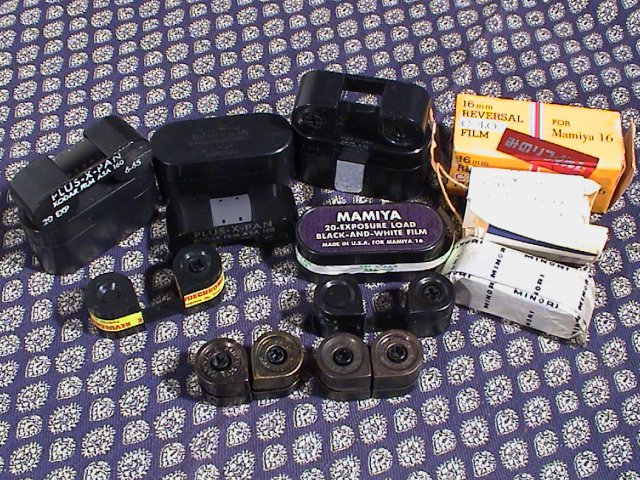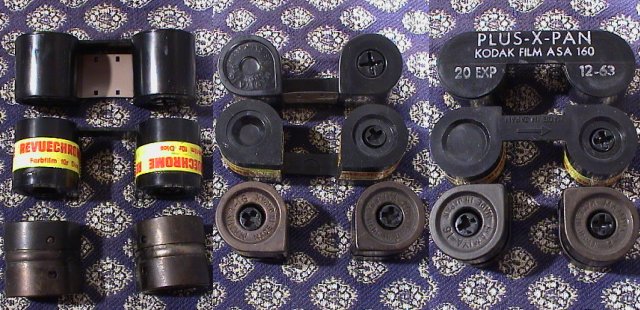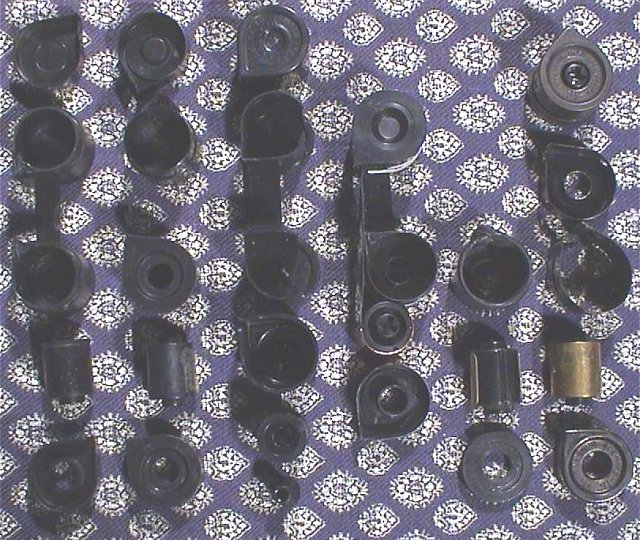introduction | Enla head chrome, black, grey | 16 filters | 16 Super filters | 16 Automatic filters | Film | Flash B-C | Flash reflector chrome, black, grey | Strap | 16 Automatic grip holder | Waist Level Finder

The original cassette is a single chamber and made of metal. A pair was needed, one for the take up and the other the feed. The film is attached to a plastic spool with crossed slots to for the film advance blade. Plastic versions of these were later made, one with a slot on cap and another with a screw on top.
Two plastic cassettes with a bridge between the feed and take up spools are commonly found. One is re-loadable and the other is glued shut. The first single-piece has both take up and feed spools. This allowed the 16 Super to have spinning disc to show that the film was being correctly wound. Later versions have an empty chamber for the feed film and a recess so that they still fit earlier camera.
The case for the double cassette also is seen in different forms. One is like a Minolta 16 case, with raised rim around the edge and close contours. The other is taller than the cassette. Mamiya certainly would have done better to adopt the Minolta 16 cassette format, but one distinct advantage of the Mamiya cassettes is that all types fit all cameras, even the early cameras which surprisingly also allow space for the bridge.
Mamiya format cassettes where also made by other companies like Ultima.



Last Updated on 16th August 2005